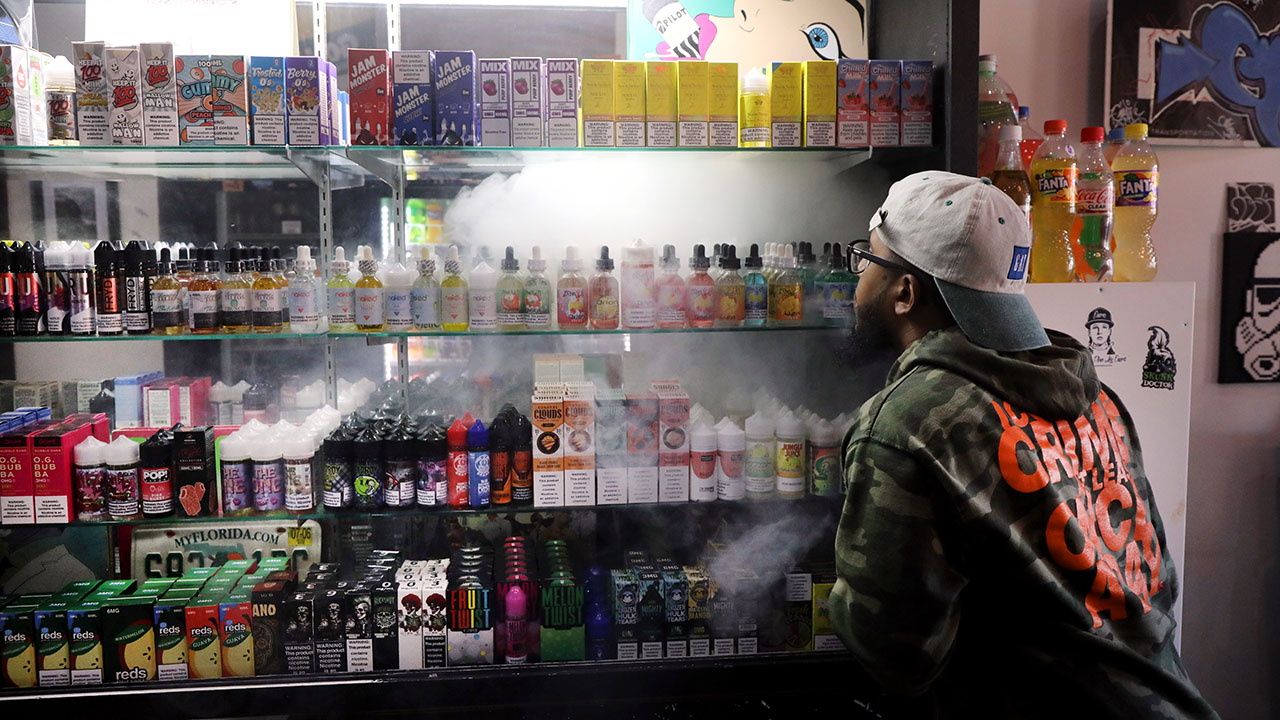
An outbreak of lung injuries among e-cigarette users across much of the United States has focused national attention on the potential dangers of vaping, prompting the federal government and some states to take policy steps in response.
The exact cause of the respiratory illness has not yet been determined, and there is still uncertainty surrounding the specific health risks associated with vaping. E-cigarettes create a water vapor that users inhale, using cartridges that typically contain nicotine, flavorings or cannabis products along with chemicals.
As medical professionals and policymakers grapple with questions over e-cigarettes and public health, here’s a look at what survey data – gathered before the recent outbreak – shows about e-cigarette use in the United States.
The shares of secondary students who have vaped nicotine in the past month have roughly doubled since 2017. From 2017 to 2019, the shares who had done so increased among 12th graders (11% to 25%), 10th graders (8% to 20%) and 8th graders (4% to 9%), according to preliminary data from the University of Michigan’s Monitoring the Future (MTF) survey.
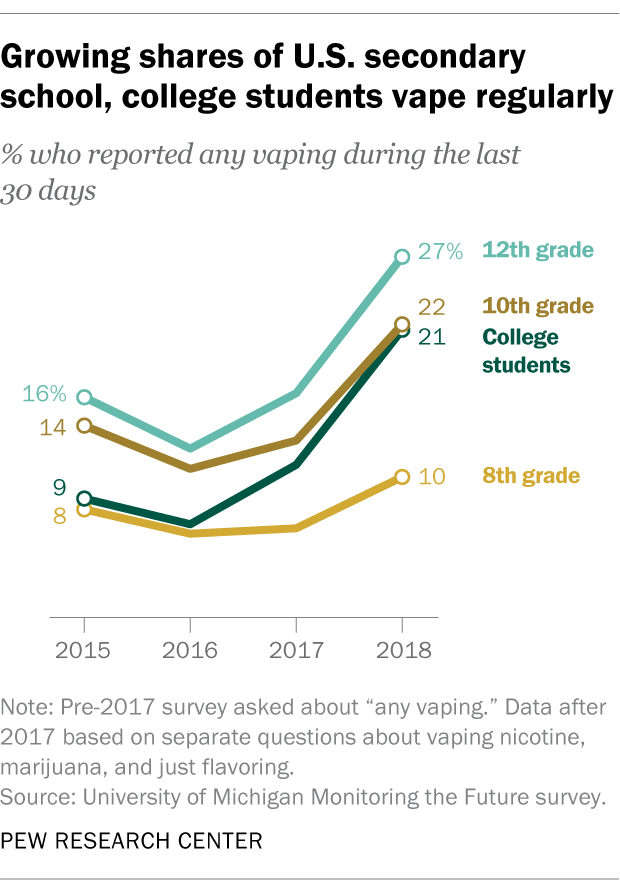
In addition, vaping increased among college students from 2017 to 2018, the most recent year for which MTF has released data for this group. In fact, the uptick in vaping among college students for nicotine (from 6% in 2017 to 16% in 2018) and marijuana (from 5% to 11%) were among the greatest one-year increases for any substance asked about since the survey was first administered in 1975. (The long-running annual survey is first distributed to a nationally representative sample of students in eighth, 10th and 12th grades, and a randomly selected sample from each senior class continues to receive surveys biannually after finishing high school.)
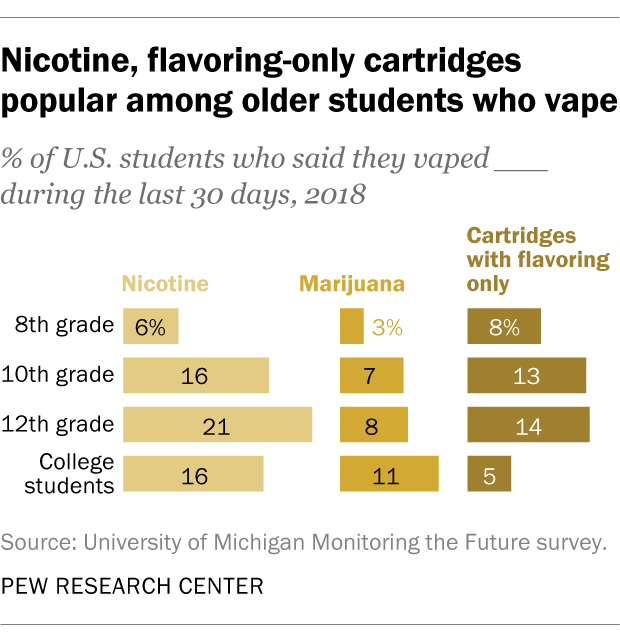
Nicotine was the most commonly cited substance being used in e-cigarettes for most groups of students in 2018. Vaping just flavoring, by comparison, was more common for 12th graders (14%), 10th graders (13%) and eighth graders (8%) than for college students (5%) in the previous month.
Across all four student levels, the overall shares who report vaping any substance during the last 30 days have increased since 2015.
Young adults are more likely than older people to vape, but less likely to smoke cigarettes. In a July 2018 Gallup poll, 9% of U.S. adults said they “regularly or occasionally” vape – still below the 20% who said they “regularly or occasionally” smoke cigarettes. Two-in-ten Americans ages 18 to 29 said they vape, compared with 8% of those ages 30 to 64 and fewer than 0.5% among those 65 and older.
Although adults are more likely to smoke than to vape, the share of 18- to 29-year-olds who smoke traditional cigarettes has fallen over time. In the early 2000s, about a third of young adults (34%) reported smoking cigarettes in the past week – the largest percentage of any age group, according to Gallup. In July, just 14% of young adults said they smoked in the previous week, compared with 19% of those ages 30 to 49 and 18% of those 50 to 64.
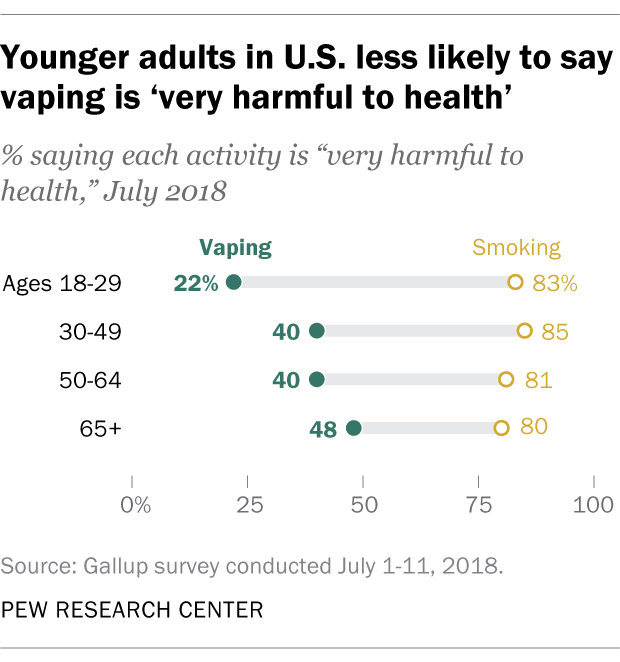
As of summer 2018, those under 30 were less likely than older Americans to believe vaping is harmful to one’s health. Roughly one-fifth of U.S. adults (22%) under age 30 said vaping is “very harmful” to one’s health, compared with 40% of adults ages 30 to 64 and 48% of those 65 and older, according to the same July 2018 Gallup survey. Comparatively, large majorities of Americans say smoking conventional cigarettes is very harmful to one’s health, but there were no significant differences by age: Eight-in-ten or more in each age group said that smoking cigarettes is “very harmful” to one’s health.
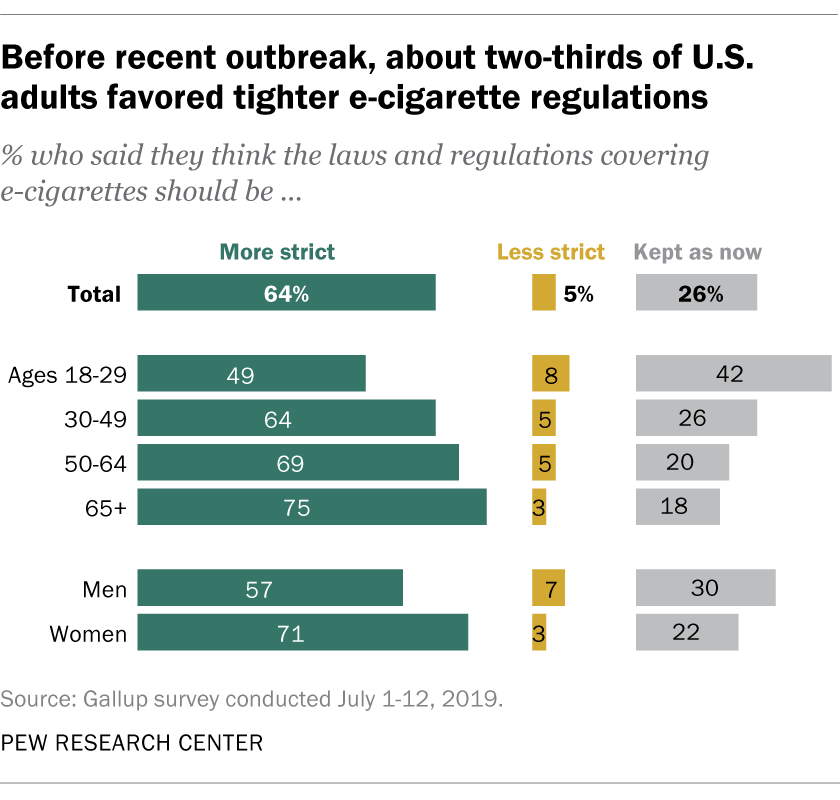
As of this past summer, roughly two-thirds of Americans said they would like to see tighter e-cigarette regulations. In a July 2019 Gallup survey, 64% of U.S. adults said laws and regulations covering e-cigarettes should be made more strict, while around a quarter (26%) said regulations should stay as they are now. Just 5% said these laws and regulations should be less strict.
Younger Americans – those ages 18 to 29 – were split on laws surrounding e-cigarettes: While roughly half (49%) said laws should be made more strict, 42% said laws should be kept as they are. By comparison, roughly two-thirds or more of older adult groups said regulations covering e-cigarettes should be made more strict.
Women were also more likely than men to favor stricter laws and regulations (71% vs. 57%).
Vaping by friends or family is a common reason why some students choose to do it. Among students in grades six through 12 who said they had ever used an e-cigarette, the most common reason given was use by a friend or family member (39%), according to the 2016 National Youth Tobacco Survey.
Roughly one-third of these students (31%) said they used an e-cigarette because of availability of “flavors such as mint, candy, fruit, or chocolate,” while 17% said they used it because they perceived them to be “less harmful than other forms of tobacco such as cigarettes.”
Less common reasons cited by middle and high schoolers for using e-cigarettes were because “they are easier to get than other tobacco products, such as cigarettes” (5%), “they cost less than other tobacco products such as cigarettes” (3%) and “famous people on TV or in movies use them” (2%).
